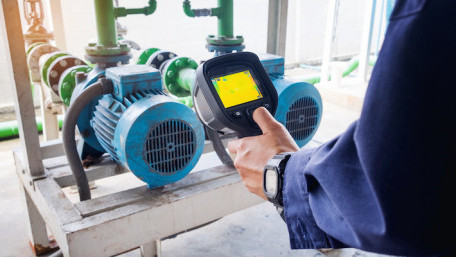
Converting thermal energy into electrical signals, temperature sensors such as RTDs and thermocouples are fundamental in the maintenance and operation of…
Converting thermal energy into electrical signals, temperature sensors such as RTDs and thermocouples are fundamental in the maintenance and operation of industrial environments and equipment.
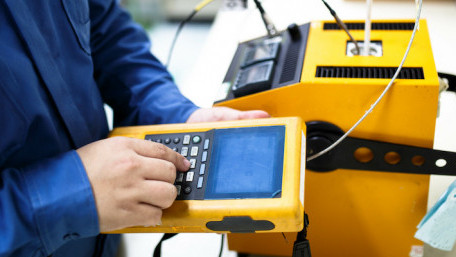
Calibration can be a time-consuming process requiring expensive traceable tools, but high-accuracy signals result in…
Calibration can be a time-consuming process requiring expensive traceable tools, but high-accuracy signals result in higher-quality products, better customer satisfaction, and, ultimately, greater returns.
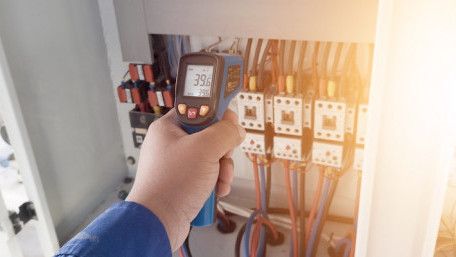
Operating just outside the visible light spectrum, infrared energy emits from anything with heat stored in it. Detecting…
Operating just outside the visible light spectrum, infrared energy emits from anything with heat stored in it. Detecting this energy, infrared sensors find use in applications from proximity detection to temperature measurement.

No more IIoT buzzwords! This article aims to walk through an implementation of MQTT using the paho-mqtt library using…
No more IIoT buzzwords! This article aims to walk through an implementation of MQTT using the paho-mqtt library using nothing more than your local machine and some simple Python programming.
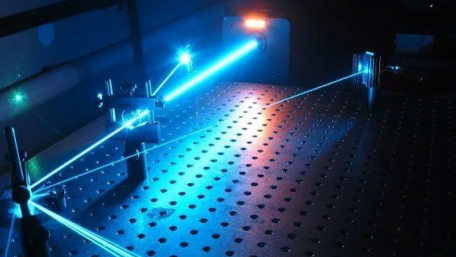
A subset of light is the focused cohesive beams that make up lasers, which can be used in optical sensing. These devices…
A subset of light is the focused cohesive beams that make up lasers, which can be used in optical sensing. These devices provide benefits of greater range, precision, and even mapping for mobile robotics.
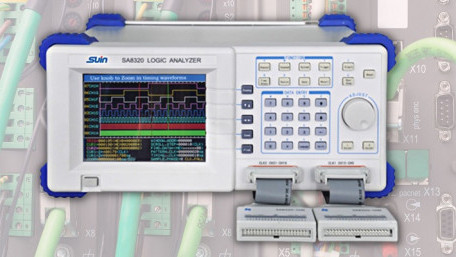
ASCII is a familiar acronym, found in applications like Modbus communications and string data types—but what is it, and…
ASCII is a familiar acronym, found in applications like Modbus communications and string data types—but what is it, and what does ASCII mean for automation engineers?

Cybersecurity is all about processes and people. A lot of threats can be mitigated through technology, but only if people…
Cybersecurity is all about processes and people. A lot of threats can be mitigated through technology, but only if people understand how cybersecurity affects control systems and related technology.
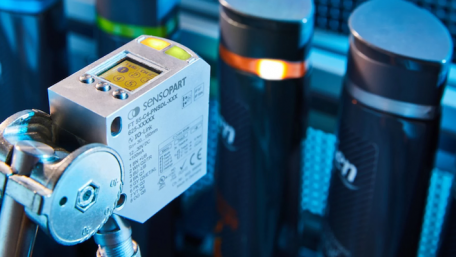
Optical sensors are one of the most popular sensor types in industrial automation. This article covers optical sensor…
Optical sensors are one of the most popular sensor types in industrial automation. This article covers optical sensor basics and commonly used types, including fiber optic, photoelectric, and optical encoders.

Safety is a concern in any system containing potential energy, whether electrical, chemical, or fluid. Each has methods…
Safety is a concern in any system containing potential energy, whether electrical, chemical, or fluid. Each has methods of protection, and for fluid systems, certain shutoff valves are used in situations when excess pressure can be a problem.
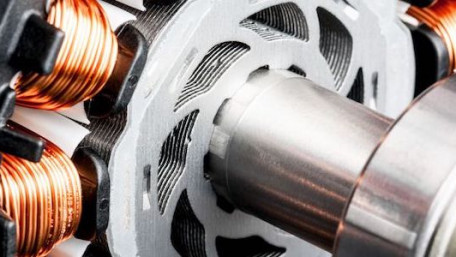
Field-oriented control (FOC), also called vector control, can control 3-phase alternating current motors and brushless DC…
Field-oriented control (FOC), also called vector control, can control 3-phase alternating current motors and brushless DC motors. Read more to learn its advantages, how it works, and its best applications.
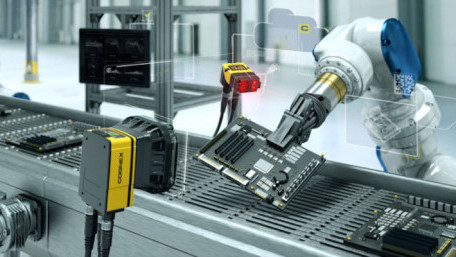
Industrial sensors can be found in nearly every modern industrial process, regardless of complexity. Learn the history,…
Industrial sensors can be found in nearly every modern industrial process, regardless of complexity. Learn the history, evolution, and variety of sensors that make manufacturing the modern marvel we see today.

Addressing cybersecurity threats introduced by IIoT technology and devices can quickly seem overwhelming. However, an…
Addressing cybersecurity threats introduced by IIoT technology and devices can quickly seem overwhelming. However, an understanding of the risks can lead to some straightforward countermeasures.
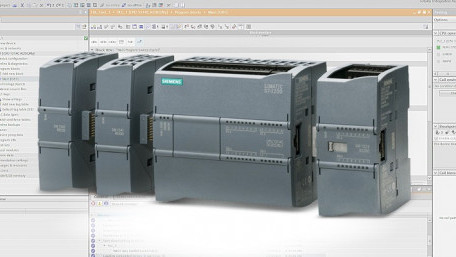
Programming simple coil and contact commands is an easy matter in most PLC IDEs. Connecting and configuring analog inputs…
Programming simple coil and contact commands is an easy matter in most PLC IDEs. Connecting and configuring analog inputs can be more challenging with various bit resolutions and conversion commands.
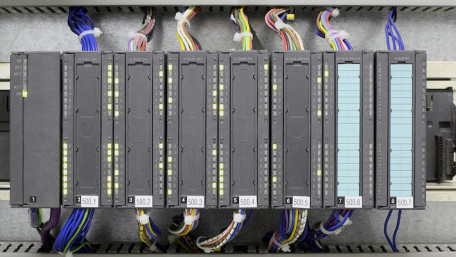
Insufficient controller memory can result in reduced HMI and SCADA response speed and longer scan times. Know the…
Insufficient controller memory can result in reduced HMI and SCADA response speed and longer scan times. Know the differences between RAM, ROM, and removable memory, and how to keep program sizes in check.

Computers understand values as long strings of binary bits, but we humans convert them to other systems for convenience.…
Computers understand values as long strings of binary bits, but we humans convert them to other systems for convenience. Decimal makes sense, but what about hexadecimal and the lesser-known octal systems?
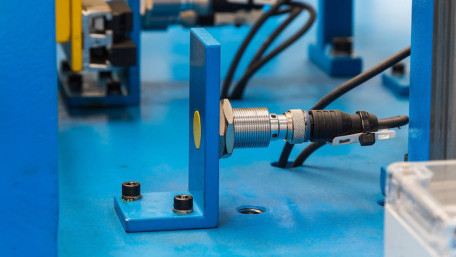
Operating voltage, linearity, dimensions, polarity protection, range… When it comes to sensors, every situation calls…
Operating voltage, linearity, dimensions, polarity protection, range… When it comes to sensors, every situation calls for understanding these specs in detail during design, purchasing, and installation.
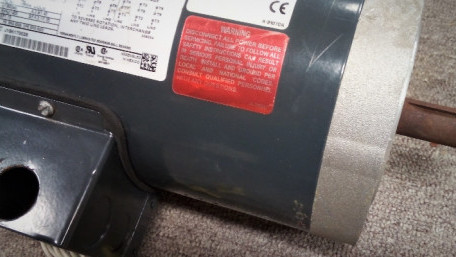
Large motors require a circuit to turn on and off. This may be as simple as a single on/off drum-type switch or as…
Large motors require a circuit to turn on and off. This may be as simple as a single on/off drum-type switch or as elaborate as a VFD unit. Learn about some common control circuit designs for typical three-phase motor requirements.

As data becomes available, maintenance can shift from being done on a rigid schedule to a more cost-effective plan of…
As data becomes available, maintenance can shift from being done on a rigid schedule to a more cost-effective plan of fixing as required, even turning attention to the root cause of maintenance woes.

Air motors are common in process industries, mainly used in hazardous areas. This article introduces the features and…
Air motors are common in process industries, mainly used in hazardous areas. This article introduces the features and working principles of air motors and the differences between air and electrical motors.
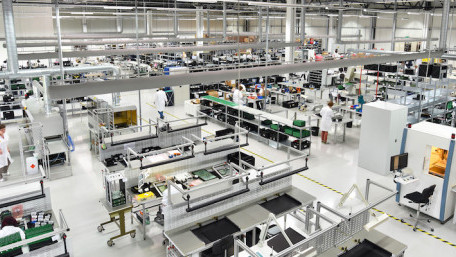
Power quality is an increasing concern for manufacturers all over the world as electrical equipment becomes more advanced…
Power quality is an increasing concern for manufacturers all over the world as electrical equipment becomes more advanced and therefore sensitive to discrepancies in the supplied power.
